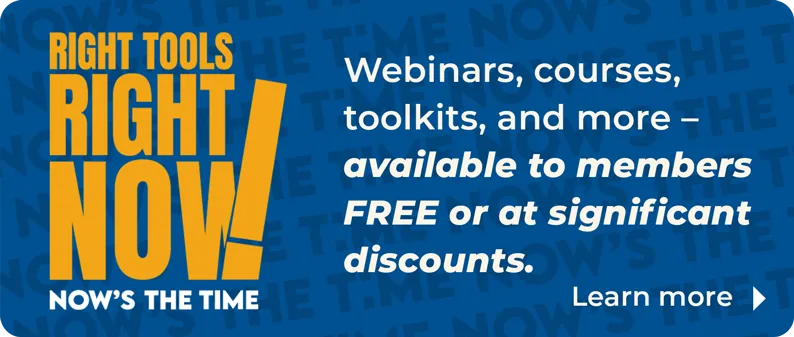
In a conversation with a client, Courtney Jones, co-principal of RE-CHRG, Inc., Chicago, and president of Jones Receiverships, LLC, learned about the significance of body language. The jewelry store owner listed out many issues he had with the building and asked for a lease reduction.
“I told him that I would review it,” Jones said.
Immediately, the store owner quickly crossed his arms, signaling his discontent with Jones’ answer.
“I then told him that one of the positive things about reviewing all the leases is to see how much of a reduction is good to meet all the inconveniences the owners have experienced,” he adds.
At that explanation, the man uncrossed his arms. Jones noted the body language—a telling sign that his client was warming up to him.
Body language is one of many nonverbal cues that can clue people in on how someone else is receiving information or responding to a circumstance. In real estate, emotions run high, and things can change quickly. It’s helpful for a real estate professional to understand the basics of body language so that they can register those queues from their clients and make sure they themselves are giving off the right body language as well.
First Impressions Make a Difference
A thriving real estate business is initially built on first impressions.
“The science proves it — most people make a first impression of a person within seven seconds, so you have to make it count,” says Vanessa Van Edwards, lead behavioral investigator at Science of People, a social skills research and training facility in Austin, Texas.
A survey by the Science of People Research Lab noted that 95% of respondents believe first impressions are important; 61% feel they can instantly spot a “phony” the first minute; and 79% think they usually or always make a good first impression. Body language is integral to the kind of first impression one gives off.
“A good first impression can land you a job, build stronger relationships and even attract a partner,” Van Edwards states. “With a great start, you can strengthen your relationships and make future interactions go smoothly.”
Here’s a few of her suggestions on making that impression a good one:
- Show your hands: If someone sees your hands right away, body language denotes that it can offer a sense of safety. Give them a little wave and keep your hands out of your pockets.
- Smile with authenticity: Edwards suggests teaching yourself to smile in front of a mirror with your cheek muscles moving up until the eye muscles are crinkled. It can dazzle people and make them feel comfortable. The key, though, is smiling authentically. If it doesn’t feel natural to you, it’s best not to force it.
- Disarm your arms: Crossed arms signal a closed off attitude, which might be a deterrent for some. It’s best to rest your arms by your side. It also lets you reach out more easily to shake hands.
Get Good at Deciphering Body Language
As real estate professionals, people are telling you things all the time, says Traci Brown, a Certified Speaking Professional (CSP), body language expert and behavior analyst from Boulder, Colo.
“It’s up to you to get the message. If you understand their needs more deeply than they do, you will succeed with them,” she says. “It’s not about just selling one house to them but all their houses.”
Her focus when working with salespeople is to bring what is deeply unconscious into the light.
“Most of the time, we are paying so much attention to ourselves. Be yourself and take your cues from your client,” she adds. “Everyone has their own unique patterns. What are you willing to do to connect?”
Rather than watching your own body language, Brown encourages professionals to focus on the body language of their clients. Very few people that she has dealt with in her business are successful real estate folks who have trouble with their own body language. Instead, understanding how a client is reacting to you or what you’re saying and adjusting accordingly is key to creating a space of openness and comfort for the client.
“You need to refine things like your sensory acuity. You need to pay attention to things outside of you and use them strategically,” she says.
Tips to Connect Faster Through Body Language
Take cues from your clients – If you understand the basics of body language and what it conveys, it’s easier to understand how your client feels at a particular moment. Follow their lead. If their body language suddenly changes, change course or ask them for feedback.
Stay your distance or not – Every person has personal boundaries. Some might welcome a hug, while others prefer a handshake. Some want no physical contact at all. “People typically tell you how they feel about it by either leaning back from you or coming closer,” Jones states. “Just be consistent at your starting point to all client interactions, and ebb and flow accordingly.”
Watch for head tilts – “It is a natural human behavior to tilt our head and expose our ear when we want to hear something better,” Van Edwards comments. “If someone’s head tilts while the person is speaking with you, it is a great sign. It means they are listening—they are engaged, and they want to hear more.”
Pay attention as actions switch – When you are showing a customer a home and they respond by running their hands across the countertop or knocking on things, they are thinking more deeply about the house, Brown adds. If they dislike something, they may cross their arms or stiffen their walk suddenly. “Sometimes, you can see their eyes dilate when they really like something. It’s all contextual, and the key is to pay attention to all the different scenarios,” she adds.
Avoid body language that feels like a “no” – Crossed arms, not looking at someone when they speak, or a deadpan stare can signal to someone that you don’t like what they’re saying, aren’t taking them seriously or just want to get out of the situation. These are all queues that can feel like a “no” to someone. “I continuously shake my head in a positive way as if to say yes, especially when I’m meeting people for the first time,” Jones adds. “It gives them a more welcoming attitude.









